The Star Trek: Discovery novel line has returned for 2019, and kicking off the year is the Sylvia Tilly-centric A Way to the Stars, looking back at the young officer’s journey to Starfleet.
The author of this new novel, Una McCormack, has been writing Star Trek fiction since her debut in the 2003 Deep Space Nine anthology Prophecy and Change, and has since produced a number of DS9 stores centered in post-Dominion War era, including her most recent Cardassia-heavy release, 2017’s Enigma Tales.
A Way to the Stars marks McCormack’s first venture into the time of Star Trek: Discovery, and we had an opportunity to chat about her new relase earlier this month.
* * *
TREKCORE: During Discovery’s first season, Tilly (Mary Wiseman) quickly became a fan favorite. As someone who has now spent a considerable amount of time with this character, to what do you attribute her popularity?
UNA MCCORMACK: Tilly is popular is because she is a deeply-imagined character who combines sweetness, brilliance, and real vulnerability. You love Tilly, and you feel for her when she (inevitably) puts her foot in her mouth. Part of the pathos — and fun — of writing Tilly’s point of view is that she doesn’t always realize when she’s making mistakes, and you the writer – and, you hope, the reader – are seeing a chasm opening in front of her, and you’re begging her to notice.
Tilly makes the mistakes that we make, and she bounces back. She inspires warmth and love. But most of all, she is fantastically brought to life by Mary Wiseman. What an incredible performance! You want to watch her when she’s on screen. She has made Tilly vivid and vital, vulnerable and brave. It’s a gorgeous performance.
TREKCORE: How much of The Way to the Stars came from collaboration with the Discovery writers’ room? Which elements of Tilly’s story were you given the freedom to play with?
MCCORMACK: I was approached to write a coming of age story, which would take Tilly from a privileged — but quite sheltered — background through to her decision to try for Starfleet. Within that, I had quite a lot of freedom.
Her mother’s character was already well established [for “Runaway”], but we came up with the rest of her family background together in the process of developing the book.
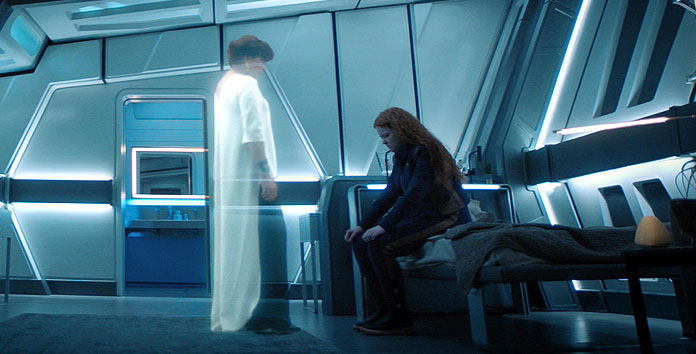
TREKCORE: The book appears to make a very intentional choice not to focus much on Starfleet itself; the one Starfleet ship we spend time with is very non-traditional. How did you approach telling a Star Trek story away from the fleet?
MCCORMACK: It’s nice to see more of the Federation than Starfleet, isn’t it?!
I always enjoyed the glimpses of everyday life that we saw in DS9, for example. Not just going back to Earth and seeing the President, and so on, but the time we spent in Joseph Sisko’s restaurant. Most people must have practically nothing to do with Starfleet on a day-to-day business. They’re just getting on with their lives.
What is interesting for me as a writer is seeing how people might live in what is basically a utopian society. Federation citizens don’t really experience material lack, but they still have families, and relationships, and have to grow to maturity and so on.
I’m also interested in the interface between the Federation and worlds that don’t have the same resources and wealth. Tilly’s encounter with such a world in the book is a game-changer for her.
TREKCORE: During the story, we get exposed to youth culture for children who aren’t interested in attending Starfleet and are pursuing other careers. Do you think there is anything that particularly distinguishes the youth of the 23rd century differ from children today?
MCCORMACK: I taught for a long time at a very prestigious university where students had often had huge material advantages. They had huge confidence about their abilities, big ambitions, and the ability — and resources — to turn those ambitions into reality.
At the same time, they were often very worried about failure, and making mistakes, and not ‘getting on’. There was also often a lot of pressure to follow parental expectation rather than trying something more radical or less familiar. I thought a lot about these students when I was trying to imagine Tilly and her cohort.
I guess the big difference between children today and in the 23rd century is that we don’t have the option to travel into space! This sounds so obvious, but it does make a difference, particularly given how small and finite our planet feels these days.
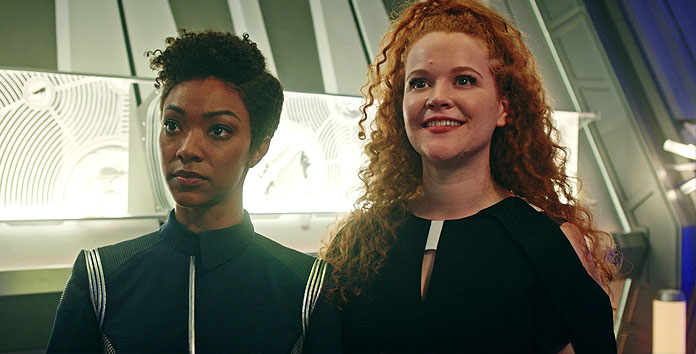
TREKCORE: The Way to the Stars and the “Runaway” Short Trek feel very much like companion pieces. What was the process behind working with the Discovery writer’s room while two Tilly works were in production?
MCCORMACK: I had the script for “Runaway” in advance. I worked very closely with [Discovery writer] Kirsten Beyer on the book; we had some great transatlantic phone conversations thrashing out the details of Tilly’s family background, and the details of her story arc in the book.
Developing this book with Kirsten is one of the most creative and fun experiences of my writing career!
TREKCORE: Are there other elements of Discovery that you would like to explore, if given the opportunity?
MCCORMACK: I enjoyed exploring the non-Starfleet aspects, and I’d happily do more of that.
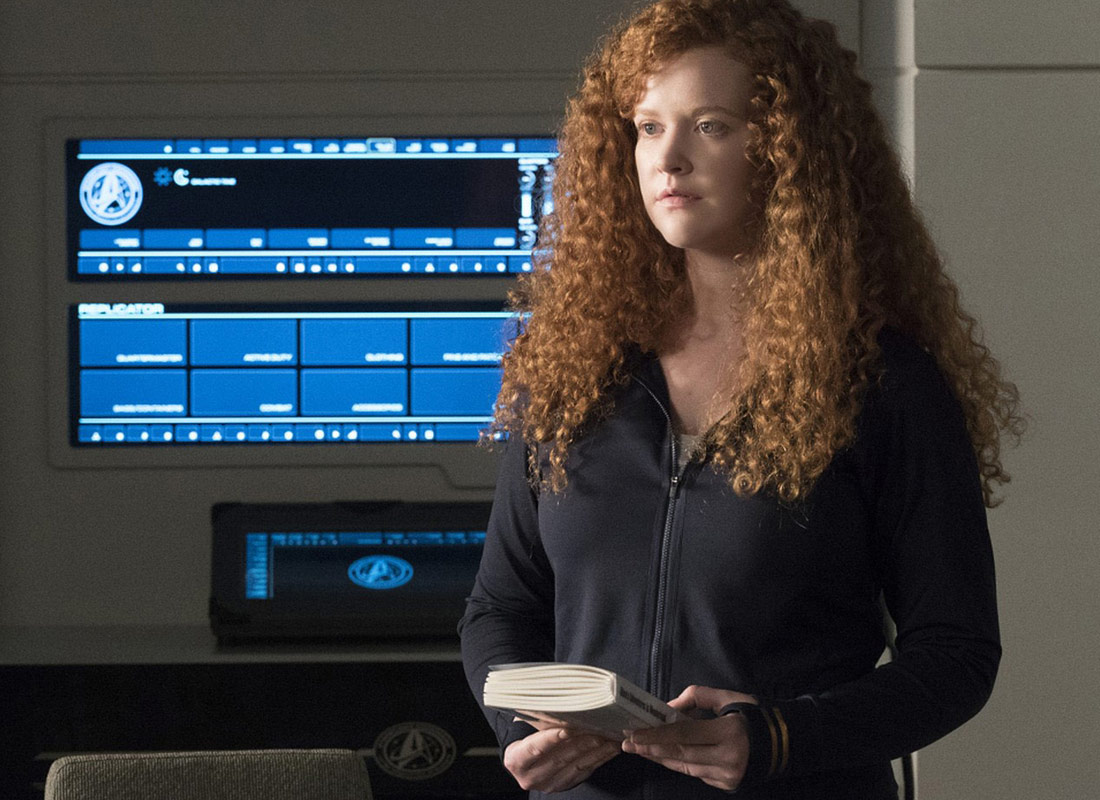
TREKCORE: Some Discovery fans are coming to Trek fiction for the first time through these tie-in novels. If they liked The Way to the Stars, what other Trek novels of yours can you recommend?
MCCORMACK: Most of my previous Star Trek novels have been based on DS9, and are usually set on Cardassia Prime. The Never-Ending Sacrifice is a standalone following a Cardassian character, Rugal [from “Cardassians”], through the Dominion War.
I’ve also written some Garak-centred books, The Crimson Shadow and Enigma Tales, and have enjoyed writing Doctor Pulaski [from The Next Generation] as a lead character: she takes centre stage in The Missing.
Outside of Trek, people might also enjoy my two novels set in Eric Brown’s Weird Space universe: The Baba Yaga and The Star of the Sea. Feminist Lovecraftian space opera! I also write novels for the BBC Books’ Doctor Who range: my most recent, Molten Heart, involves Jodi Whittaker’s Thirteenth Doctor and the current TARDIS team.
I also have a science fiction novella, The Undefeated, coming from Tor.com in May. It’s a feminist space opera: I pitched it as “feminist High Plains Drifter – in space!,” so people who enjoyed Tilly’s story might enjoy that!
Una McCormack is the author of seven previous Star Trek novels: The Lotus Flower (part of The Worlds of Star Trek: Deep Space Nine), Hollow Men, The Never-Ending Sacrifice, Brinkmanship, The Missing, the New York Times bestseller The Fall: The Crimson Shadow, and Enigma Tales.
She is also the author of three Doctor Who novels from BBC Books: The King’s Dragon, The Way Through the Woods, and Royal Blood. She has written numerous short stories and audio dramas. She lives in Cambridge, England, with her partner of many years, Matthew, and their daughter, Verity.
![]()
The Star Trek: Discovery novel series continues this summer, with John Jackson Miller’s The Enterprise War, a Captain Pike tale set aboard the Enterprise during the Klingon-Federation war seen in the first season of Discovery.

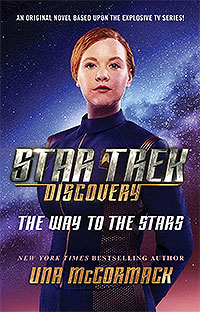
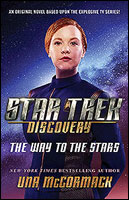 Novel #4:
Novel #4: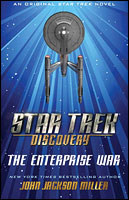 Novel #5:
Novel #5: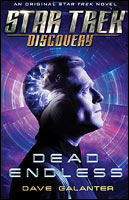 Novel #6:
Novel #6: